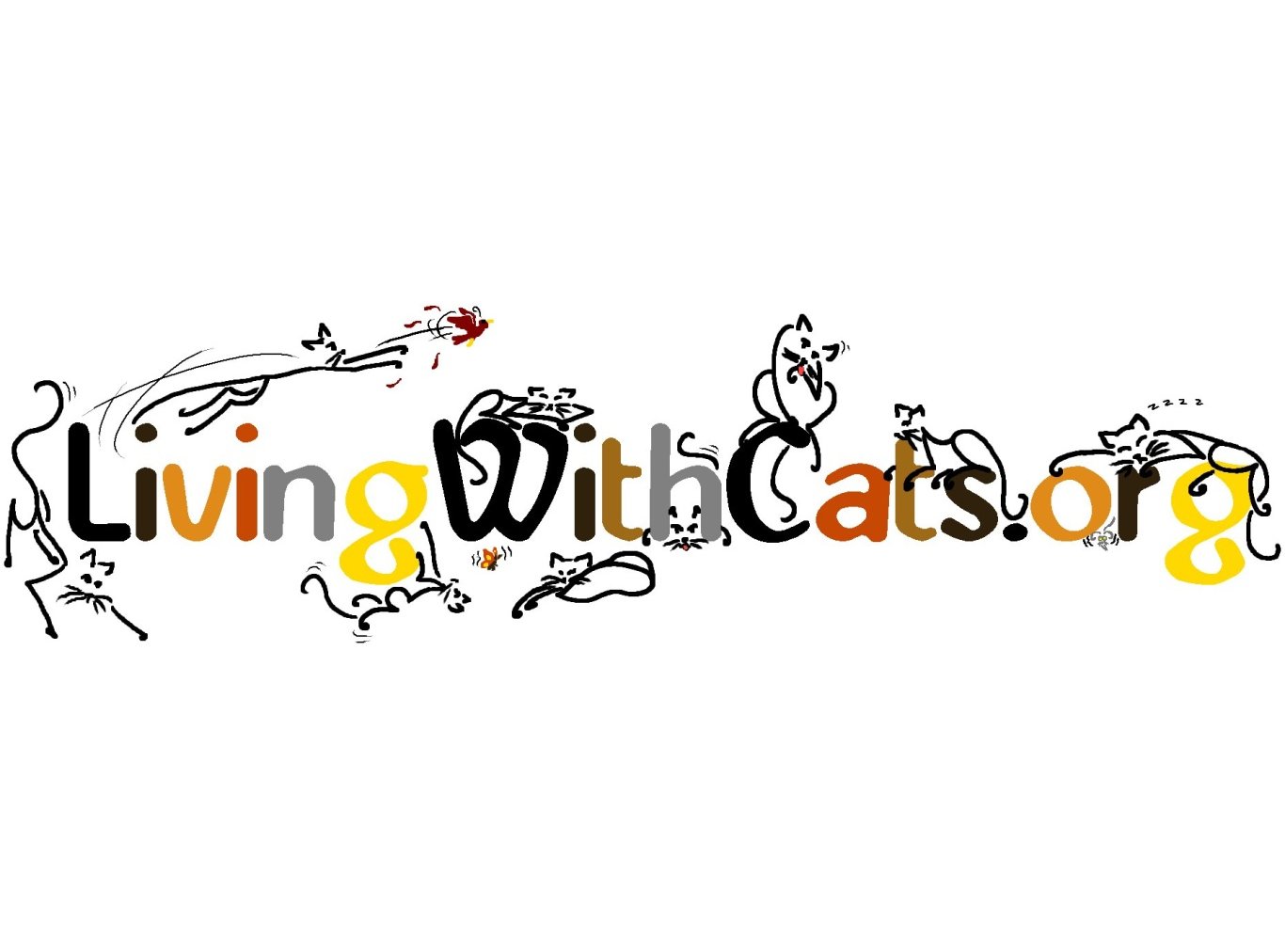Cats are very individualistic, and should be treated as such. They will let you know just what they feel like at any given time. Trying to force a cat into an unwanted activity will result in aggressive behavior or in withdrawal. The more you respect the needs of your cat, the more you will be rewarded by affection and good behavior.
EATING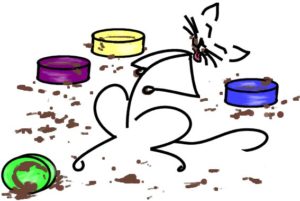
Cats are notoriously finicky eaters. A cat gets bored with a steady diet of the same food and prefers variety. A cat’s appetite increases during cold weather and decreases when the weather is warm. All cats appreciate and insist upon variety. Think about it. Would you enjoy eating the same thing each and every day? I doubt it.
Doubtless your cat will have other more exotic fancies in the food-line and it would be foolish to deny her an occasional fling. It may be cantaloupe, cake, fruit, nuts, peanut butter, spaghetti, asparagus, ice cream, etc. Whatever it is, do not be afraid to indulge your cat now and then, but refrain from slipping her tastes from the table at every meal. It is best to stick to the regular, commercial cat foods (canned and dry) since they are 100% nutritionally complete and then add an occasional snack.
NOTE: Snacks are best given after the cat has eaten her regular food. It is largely a matter of common sense and experimentation.
A cat is a ‘snacker’. She will visit her food dish up to 36 times within a 24-hour period. By leaving out a dish (preferably three dishes with three different choices of dry food) at all times, your cat can eat whenever and as often as she chooses (cats generally don’t over-eat as dogs will). Also feed a serving of 1 small can of food (3 oz., like the little Fancy Feast cans, or Meow Mix cans, Whiskas foil packets, etc.) morning and night. Use a different flavor each time. A wide variety is easily available. Please don’t feed your cat directly from the can her food comes in. Put it in a clean dish. An opened can has sharp edges and is simply too small for your cat to eat comfortably from. Fresh, clean water needs to be accessible to your cat at all times.
Many cats won’t eat if their food dish is located near the litter box. Can you blame them? Cats are very clean.
NOTE: Cats don’t drink large amounts of water but need fresh water daily. If your cat does drink a lot of water, take her to your veterinarian. She could be seriously ill. Cats with diabetes and kidney problems consume a lot of water. We change our water dishes morning and night. We enjoy a fresh drink of water. So will your cat. In fact, some cats like to drink from a water faucet! We have one in particular who drinks her water only in this manner. In fact, she’s learned how to turn the water on in the sink herself! She watched us turn it on, then one day she began to do it too. Cats are smart! Every now and then each day we let the water trickle in a bathroom sink. The cats line up to enjoy the fresh, cool water
Clean all food and water dishes well, just as you would your dishes. Cats can get sick from the use of dirty dishes, too. Go light on the soap. Rinse very well. Many detergents have ingredients harmful to cats. Plastic dishes and bowls are not the best as they tend to hold odors, which means bacteria is present. Use porcelain, glass or stainless steel dishes and bowls.
As with humans, the nutritional needs of cats vary greatly from individual to individual. The only way to find out is through trial and observation. When the cat is getting the correct balance of food she will neither get thin nor fat and flabby. Her coat will be shiny.
The actual amount of food a cat needs varies among cats of equal weight because of differences in metabolic rate and activity levels. Labels only provide guidelines–the actual amount to feed must be customized to the individual cat. Spayed and neutered cats have a much lower metabolism than intact cats. Pregnant and nursing cats have a much higher food requirement.
The bottom line on feeding requirements is that each cat is an individual. You need to look at your cat objectively and determine the correct amount of food based on her activity level and metabolic rate, as well as the nutrient density of the food you feed her. Cheaper foods have a lot of filler material with no nutritional value.
A cat’s ideal weight–
- The ribs cannot be seen but are easily felt.
- The abdomen is trim, but not flabby.
Offer food at body or room temperature. Food that is too cold will often be vomited immediately. This isn’t a serious health problem for the cat but can really cause you major carpet cleaning problems. Canned food, in particular, can leave some very nasty stains (as well as some of the dry foods–due to the addition of food coloring.) One feeding a day is not healthy for your cat. She needs at least two regular feeding times. As stated earlier, a cat’s natural way to eat is several small meals throughout the day.
Stick to regular feeding times (same time each day) for feeding the canned food (morning and night). Always give free access to dry food. Cats respond best to regular feeding schedules.
Being the fussy eaters that they are, cats demand quality first. They may get bored and turn away from even the best dish of food if it is set out for them too often or, as some people do, all the time. Then again, there are some cats that stubbornly insist on always having the same flavor to sink their teeth into! By always providing a good variety of both canned and dry foods, your cat won’t get “hung up” on any one brand and flavor. (Sometimes some flavors and/or brands are discontinued–a nasty problem for you if that is all the cat will eat.) Buy canned and dry foods that are not off brands. Check label ingredients. Be sure the food meets all of your cat’s nutritional needs. Feeding a good variety of brands and flavors, you will be more likely to give your cat all she needs nutritionally.
A little known fact:
Cats have an innate cycle of body weight. If a cat is on one of the down cycles of her body weight, she will not have much of an appetite. So don’t worry if your cat sometimes seems off her food. As long as it doesn’t last more than a few days, she is all right. If she stops eating altogether for more than two days, take her to your veterinarian. There is most likely a physical problem going on.
Do not allow your cat to eat dog food. Cats will become ill on a diet of dog food. A cat’s nutritional needs are quite different from a dog’s. In comparison with other meat-eaters, the cat requires a very high proportion of protein in her daily diet. A cat needs twice as much protein per pound of body weight as a dog. This protein must come from an animal source in order to contain the amino acids necessary for cats. (Vegetarian diets will not provide a cat with enough usable protein, taurine, essential fatty acids and minerals to maintain heath.)
Canned food should make up 20% of your cat’s diet, while dry food makes up the remaining 80%. If the cat gets only canned food, its teeth and gums will build up tartar and gum disease will develop. Canned food should be fed to your cat since it has a high water content and can help prevent urinary tract blockages. These are very painful to the cat and require a veterinarian’s help, and sometimes even emergency surgery. Of course, this is costly to you.
Never feed pork and poultry unless it has been well-cooked (if you wish to supplement your cat’s diet with a change occasionally). Cats can get salmonellae, trichinae, and the virus causing pseudo rabies, which is ultimately fatal to a cat.
Vitamin and mineral supplements are not necessary if you are feeding a nutritionally balanced diet. In fact, they may even be harmful. Only your veterinarian is qualified to decide if your cat needs any vitamin and/or mineral supplements.
COMMON MISCONCEPTIONS ABOUT CATS
Milk. Cats and kittens can drink cow’s milk on an occasional basis, but they do not need to drink it to be healthy. Many cats are lactose intolerant and this will cause them to have vomiting, diarrhea and bloating. Why do many cats like milk or dairy products? All dairy products contain a very high quality protein called casein, which is made up of amino acids (the building blocks of proteins) that cats require in their diets.
NOTE: Yogurt is an exception (as well as other dairy products) because it has been fermented, and contains lactobacteria.
Liver. Liver contains very high concentrations of vitamin A and makes it dangerous for cats to eat a lot of liver. Only use canned cat food liver. Vitamin A in high dosages can cause bleeding and inflammation of the connective tissue covering a cat’s bones, as well as painful long spurs around the joints. The problem with liver is that cats simply adore it. It is not good for your cat, particularly when uncooked.
NOTE: Table scraps are not suitable cat food. If you plan to feed an occasional table scrap (just a taste)–that’s okay. Just don’t make table scraps a main part of your cat’s diet.
Raw Fish & Raw Eggs. Both contain antivitamin factors, which bind with vitamins and interfere with vitamin metabolism and thus produce a lethal deficiency. Raw fish also has an enzyme that destroys vitamin B. A deficiency in this vitamin results in brain damage.
Onions. Can cause a blood disorder (Heing Body Anemia)
NOTE: Feed your cat just before you eat. She won’t be so interested in your meal and you’ll be able to eat in peace.
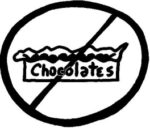 NOTE: VERY IMPORTANT!!!
NOTE: VERY IMPORTANT!!!
Never, never feed your cat any chocolate. It could kill your cat. CHOCOLATE IS POISONOUS to cats–just like it is for dogs.
Cats are full of curiosity and will almost always try something new. So you should have no hesitation varying a cat’s food so long as her dietary needs are met. Of course, any good-quality, name-brand commercial cat food will do this.
NOTE: Never be tempted to make a cat fast so that she will more readily eat a new food. Prolonged fasting can be dangerous since it could lead to a degeneration of the cat’s liver, and death. Cats will starve themselves to death rather than eat something they don’t like.
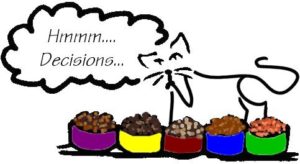 While cats are curious about what is in a food dish and will pick at unfamiliar food, they will only regularly eat what they really like–kind of like humans. Simply note what foods she likes and dislikes. Only buy what she likes.
While cats are curious about what is in a food dish and will pick at unfamiliar food, they will only regularly eat what they really like–kind of like humans. Simply note what foods she likes and dislikes. Only buy what she likes.
NOTE: Sometimes a cat will reject its food because it has begun to spoil and this is detected only by the cat’s highly sensitive nose. Don’t buy or use cat food cans that have been dented, or are past their use-by date. The food could be spoiled or starting to spoil. We always feed a good variety of food to our cats. We look at it this way–we wouldn’t want the same food day-in and day-out, month-in and month-out, ad infinitum. B-O-R-I-N-G! Cats like variety just the same as we do. We have one cat who simply adores cantaloupe! Another one thinks peanut butter is a special treat. Just remember, snacks given occasionally are okay, but not all the time.
NOTE: We always add some hot tap water to the canned food. (One can of food to one-third to one-half can warm water). Cats prefer food at room temperature. They eat it better. We break the canned food up with a spoon and mix in the water. If they lap all the moisture out and the food becomes packed in the bottom of the dish, we simply add some more warm water and mix it in again. Less food will be wasted since many cats don’t seem to want to eat it once it becomes packed down a bit. They find it too difficult to pick up easily and so will usually leave the food.
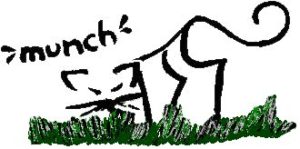 Grass. A common misconception is that grass makes cats sick. This is not true. Grass is quite good for cats. Some cats often nibble on grass, others only very seldom. Every cat should have the opportunity of doing so. Cats do not like every kind of grass equally well. Our experience shows that they are drawn to the broader leafed grasses and selectively bite off only the ends. Use the formula for Indoor Cats from Purina, Whiskas, or 9-Lives. It supplies the plant material a cat needs in its diet. They are big favorites with our cats!
Grass. A common misconception is that grass makes cats sick. This is not true. Grass is quite good for cats. Some cats often nibble on grass, others only very seldom. Every cat should have the opportunity of doing so. Cats do not like every kind of grass equally well. Our experience shows that they are drawn to the broader leafed grasses and selectively bite off only the ends. Use the formula for Indoor Cats from Purina, Whiskas, or 9-Lives. It supplies the plant material a cat needs in its diet. They are big favorites with our cats!
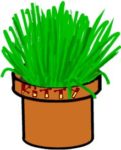 Cats that are kept indoors and feel the urge to eat greens, but can’t find any grass will help themselves to any indoor plants. Unfortunately, they don’t distinguish poisonous plants from safe plants. A number of houseplants are very poisonous, such as the poinsettia or the primrose, to name a couple. Spider plants and cypress grass are safe and found in many homes. (Protect Your Cat From Common Household Dangers.)
Cats that are kept indoors and feel the urge to eat greens, but can’t find any grass will help themselves to any indoor plants. Unfortunately, they don’t distinguish poisonous plants from safe plants. A number of houseplants are very poisonous, such as the poinsettia or the primrose, to name a couple. Spider plants and cypress grass are safe and found in many homes. (Protect Your Cat From Common Household Dangers.)
Again, grass does not make cats sick. Grass contains vitamins and helps your cat eliminate hairballs. It is a good idea to grow grass in a pot for your cat if she stays indoors all the time. Many pet stores carry the kinds of grasses that are good for your cat. Germinated wheat or oats are also readily accepted by a cat.
Recent studies by the Monell Chemical Senses Center in Philadelphia, in collaboration with scientists from the Waltham Centre for Pet Nutrition in Britain, have identified a defective gene in cats which causes them to ignore anything that smells or tastes like sugar. In other words, a large piece of the gene’s sweet receptor is missing in cats. A cat can’t taste sweet.
Some cats will eat sweet items like marshmallows, ice cream, etc. It is not the sweetness that attracts them. It is one of the other parts of the mixture of taste and odors that make up the desired item that cats find appealing.
In general, cats prefer meat–cooked or raw, it makes no difference to them. They prefer food at body temperature, rather than hot or cold. In the wild, mice are a primary food source. Meat alone is not a complete diet. Calcium deficiencies will develop on a diet of meat only.
SAFE FOOD STORAGE
Heat, moisture, air and sunlight can damage your cat’s food. So can insects and rodents. Her food can become stale, rancid and moldy if not handled and stored properly.
Storing your cat’s food safely requires only a few precautions. Common sense is all that is required. You wouldn’t store your food improperly; the same holds true for your cat’s food.
Proper food storage depends on the type of food. Most cat food is either canned (wet) or dry. Always pay attention to the use-by dates on the container; just like with your own food, your cat’s food is probably spoiled after that date.
To keep dry food safe, keep in mind that once the bag or box is opened, it is susceptible to the effects of air and moisture. An open bag or bowl of dry food won’t be hurt by air if it is for a short time. You can leave dry food out for a day or two without harm. A dry food bag or box left open for a month or more can become rancid or stale. Long-term exposure to air can contribute to oxidation of fats. If you properly seal the bag or box, or put the food in a closed container for over a week or two, no harm will come to the food.
If the air is humid, an open bag of dry cat food or old food that is left in bowls and covered over with fresh food can become moldy. Storing dry food in basements, bathrooms or other moisture-prone areas of your home can cause it to develop mold, rendering it inedible. Depending on where the opened bad or box of food is stored, it can be laden with insects or rodents that may chew through the packaging and deposit feces in the food as they eat it. Store food in tightly sealed containers.
Sunlight can destroy vitamins that are sensitive to light, so keep the cat food out of direct sunlight. Air in the presence of heat and light will cause many nutrients to break down more quickly. Keep your cat food in a cool, dry environment so it doesn’t overheat or become damp. If the food gets wet, throw it out.
Many people buy dry food in large bags to save money. If you have more dry food than you can use in a week or two, keep it in a sealed container. It doesn’t matter if the container is metal, plastic, glass, or a galvanized new trash can. It just needs to be clean and dry. If you would store your food in it, then it should be okay to store your cat’s food there. Clean the container out periodically, like when you need to add new food. You can even store excess dry food in your freezer if you have room for it.
Don’t store any food beyond the expiration date.
If you use a self-feeder for your cat, fill it only full enough to last your cat for a few days.
Unopened canned cat food lasts longer than dry food. Once the can in opened, though, it will dry out in a few hours. If your cat doesn’t eat all of the canned food you put out, discard it within a couple of hours, especially if the weather is warm or humid. If your cat eats only a part of a can at one feeding, cover the unused portion and store it in the refrigerator. As long as it doesn’t dry out and get moldy, it can be kept a couple of days in the refrigerator. When you use the refrigerated cat food be sure to add some hot water to it to warm it up. Food that is too cold will cause your cat to vomit.
If your cat’s food attracts ants, place the food dish in a large bowl of water. The water will act as a moat that the ants can’t cross, since they cannot swim.
The pet food you purchase needs to carry a nutritional guarantee on the label. Any guarantee should be based on its meeting the AAFCO recommended protocols (America Association of Feed Control Officials).
Premium brands sold by pet stores and veterinarians–ounce for ounce–have high-quality ingredients and deliver more energy, are more completely digested and yield less waste, so can be fed in smaller portions. Complete and balanced life-state statements indicate the target groups for the food–“all life stages”, “adult maintenance”, etc.
Be sure meat is listed as one of the main ingredients.
Foods made primarily from corn, wheat, rice and other grains may not provide adequate nutrition.
1-28-2017bct
